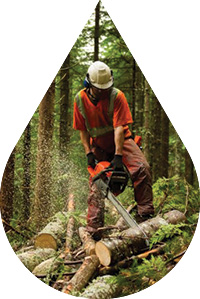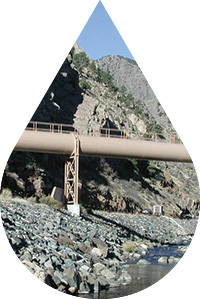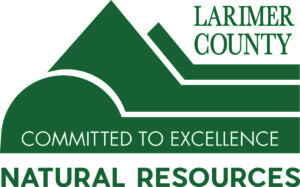The Big Thompson Initiative
The Big Picture
After years of protection from wildfire, Colorado’s forests have become dense and overgrown, increasing the risk of severe wildfires that threaten water supplies with sedimentation and debris. In 2020 alone, Northern Colorado experienced the catastrophic effects of the two largest fires in Colorado history, the Cameron Peak and East Troublesome Fires, which combined burned over 400,000 acres/625 square miles. These fires exceeded $149 million in suppression costs, destroyed more than 1,000 structures, and threatened multiple water supplies on both sides of the continental divide. Early estimates indicate that mitigation in the Poudre River and Big Thompson watersheds will cost upwards of $100 million. The social and environmental impacts from these fires will be felt for years to come. It is more imperative than ever that we act now to protect the Big Thompson watershed and the communities that depend on it from the devastating effects of future wildfires.

The Big Goal
Treat 84% of the feasible wildfire risk* to the Big Thompson watershed over the next 10 years.
Through leveraged funds and new funds, we will invest $67 million over the next 10 years to restore our forests to their natural state and reduce the risk of severe wildfires. Utilizing our Watershed Investment Tool, Peaks to People has identified the locations for treatment based on the greatest potential risk reduction.
* “Feasible wildfire risk” identifies areas of risk that we are able to treat (some areas have restrictions that do not allow management).

Why The Big Thompson?
If we prioritize short-term investments across both the Poudre and The Big Thompson watersheds, there is a likelihood that treatments may be too dispersed to meaningfully affect near-term wildfire outcomes. The rationale for focusing on The Big Thompson watershed’s critical water infrastructure is that it supplies between 40 and 55% of the annual water needs of Fort Collins, Loveland, and Greeley, and it provides water to 30 other towns and cities along the Colorado Front Range. This, coupled with the fact that a very large percentage of risk within the watershed can be treated for a reasonable budget, makes it the best course of action to quickly improve water security for the region.
In 2020, the two largest fires in Colorado history flanked the Big Thompson watershed to the west and north encompassing more than 400,000 acres. Amazingly Big Thompson Initiative priority areas were left relatively unchanged. Our team’s pre- and post-wildfire analyses indicate there are 9,000 fewer acres in need of immediate treatment. A lot of work still needs to happen within the watershed to protect homes, wildlife and water supplies.

The Big Benefits
In addition to protecting our vital water resources in Northern Colorado, The Big Thompson Initiative will provide durable outcomes and benefits, including:
| Acres Treated | 28,000 |
| Avoided Erosion | 179,000 metric tons |
| Severe wildfire avoided (active crown fire reduced) | 22,000 acres |
| Parks and open space protected from wildfire | 2,000 acres |
| Crucial wildlife habitat protected from wildfire | 17,000 acres |
| Trails protected from wildfire | 233 miles |
| Number of homes influenced (within 1 km of treatments) | 13,000 |

The Small Ask
The cost of the Big Thompson Initiative is $67 million. To put that into perspective, suppression and recovery costs for the 2020 Cameron Peak and East Troublesome wildfires are estimated to be at least $250 million. The price tag for a new water treatment plant planned by Denver Water is $600 million. While some funding for this important initiative is already in place, to accomplish these goals more funding must be raised. And that is where you come in.
We ask you to become a strategic partner by making a significant contribution. We are offering several levels of participation through our Partner Program. Join our growing list of Strategic Investors, Contributors and Partners! Select your level of giving and contact us today.
Your investment in this crucial conservation effort will not only improve our region’s water security, it will also ensure our businesses and communities continue to thrive. This is unquestionably our best opportunity to protect our water, and with it our recreation, commerce, and prosperity.

Big Thompson Initiative Partners












